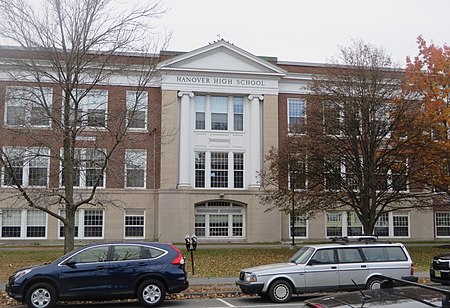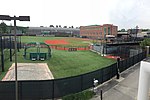Dartmouth College (; DART-məth) is a private Ivy League research university in Hanover, New Hampshire. Established in 1769 by Eleazar Wheelock, Dartmouth is one of the nine colonial colleges chartered before the American Revolution. Emerging into national prominence at the turn of the 20th century, Dartmouth was considered to be the most prestigious undergraduate college in the United States in the early 1900s.Although originally established to educate Native Americans in Christian theology and the English way of life, the university primarily trained Congregationalist ministers during its early history before it gradually secularized. While Dartmouth is now a research university rather than simply an undergraduate college, it continues to go by "Dartmouth College" to emphasize its focus on undergraduate education.
Following a liberal arts curriculum, Dartmouth provides undergraduate instruction in 40 academic departments and interdisciplinary programs, including 60 majors in the humanities, social sciences, natural sciences, and engineering, and enables students to design specialized concentrations or engage in dual degree programs. In addition to the undergraduate faculty of arts and sciences, Dartmouth has four professional and graduate schools: the Geisel School of Medicine, the Thayer School of Engineering, the Tuck School of Business, and the Guarini School of Graduate and Advanced Studies. The university also has affiliations with the Dartmouth–Hitchcock Medical Center. Dartmouth is home to the Rockefeller Center for Public Policy and the Social Sciences, the Hood Museum of Art, the John Sloan Dickey Center for International Understanding, and the Hopkins Center for the Arts. With a student enrollment of about 6,700, Dartmouth is the smallest university in the Ivy League. Undergraduate admissions are highly selective with an acceptance rate of 6% for the class of 2027, including a 4.5% rate for regular decision applicants.Situated on a terrace above the Connecticut River, Dartmouth's 269-acre (109 ha) main campus is in the rural Upper Valley region of New England. The university functions on a quarter system, operating year-round on four ten-week academic terms. Dartmouth is known for its undergraduate focus, Greek culture, and campus traditions. Its 34 varsity sports teams compete intercollegiately in the Ivy League conference of the NCAA Division I. The university has many prominent alumni, including 170 members of the United States Congress, 24 U.S. governors, 8 U.S. Cabinet secretaries, 3 Nobel Prize laureates, 2 U.S. Supreme Court justices, and a U.S. vice president. Other notable alumni include 81 Rhodes Scholars, 26 Marshall Scholarship recipients, 13 Pulitzer Prize recipients, 10 CEOs of Fortune 500 companies, and 51 Olympic medalists.








